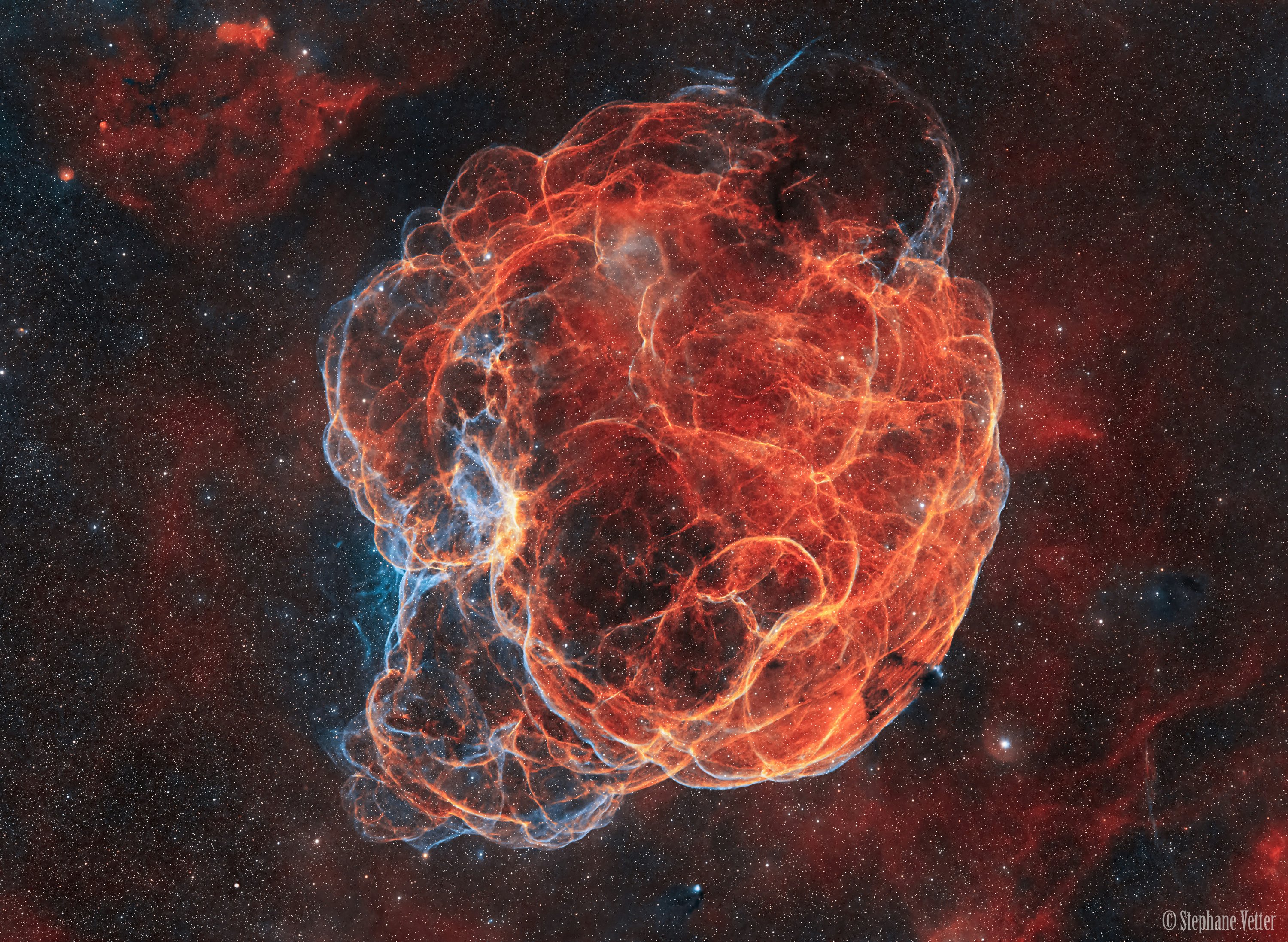Welcome to DU!
The truly grassroots left-of-center political community where regular people, not algorithms, drive the discussions and set the standards.
Join the community:
Create a free account
Support DU (and get rid of ads!):
Become a Star Member
Latest Breaking News
Editorials & Other Articles
General Discussion
The DU Lounge
All Forums
Issue Forums
Culture Forums
Alliance Forums
Region Forums
Support Forums
Help & Search
Latin America
Related: About this forumBehold The Strange Beauty Of A Tangled Nebula

This is all that's left of a massive star that died 40,000 years ago.
BY
KIONA SMITH
FEB. 27, 2024
These looping, twisting tendrils of gas are the debris cloud from a tremendous cosmic explosion – an explosion whose light may have been visible to the last Neanderthals on Earth 40,000 years ago.
Today, the bright blazing light of that long-ago explosion has faded, and the Spaghetti Nebula is too dim to see with the unaided eye, despite the fact that it covers a swath of sky six times as wide as a full Moon. Most of the looping filaments of gas that give the nebula its nickname are made of hydrogen, which shows up in red in this image. Blue represents oxygen gas, which would have been among the last elements to be fused deep in the heart of the massive star before its death.
A COSMIC CATACLYSM
When the star — unnamed because we’ve only ever known it in its exploded state — reached the end of its nuclear fuel supply, it simply gave up and collapsed under its own tremendous weight. The force of that sudden collapse triggered one of the most powerful explosions in the universe, blasting the star’s outer layers into space. All the intricate tangles of gassy filaments that make up the Spaghetti Nebula used to be packed into a single star, somewhere between 8 and 15 times more massive than our Sun.
Meanwhile, the dead star’s core collapsed into a pulsar: a ball of matter so dense that its atoms have been crushed into smaller particles called neutrons. As this neutron star spins wildly on its axis, its powerful magnetic field funnels charged particles into a pair of jets that blast outward from its poles. Those jets also emit radio waves, which sweep the sky like bizarrely fast lighthouse beams.
More:
https://www.inverse.com/science/strange-beautiful-nebula-image
2 replies
 = new reply since forum marked as read
Highlight:
NoneDon't highlight anything
5 newestHighlight 5 most recent replies
= new reply since forum marked as read
Highlight:
NoneDon't highlight anything
5 newestHighlight 5 most recent replies
Behold The Strange Beauty Of A Tangled Nebula (Original Post)
Judi Lynn
Mar 2024
OP
Easterncedar
(5,357 posts)1. The writing intrigued me
Kiona Smith has written some extremely interesting articles. As ever, Judi Lynn, thanks for expanding my universe!
Judi Lynn
(164,039 posts)2. Oh, thank you, Easterncedar! I did think I had posted it in the Science forum. Late nite posting, I'm afraid!! Thank U!
That entire subject absolutely overwhelms me.
There's a poster who has a son whose career is possibly astrophysics, maybe. . . .
Can't imagine how anyone can grasp any part of what's needed to understand such staggering numbers, to be able to grasp what's involved!
Very kind message, and thank you, again. ![]()